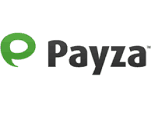Every New Years, we rent a vacation house with friends from college. We get one of those big 12-bedroom vacation homes, fill it with food, games, adult beverages, kid beverages, and then we spend 3-4 days celebrating another year gone by.
When we started, there were no kids. Now there are close to a dozen!
A few years ago, we took over coordinating once the house we rented became closer to us. We front the deposit and then the final payment, our friends pay us back, it’s worked out well.
It wasn’t until we were coordinating that I realized how many different payment options are available. For the longest time, we just sent a check via billpay on our bank. It’s easy, doesn’t even cost us a stamp, and the information was already in there.
Since we’ve been coordinating, our friends have used PayPal, Venmo, Google Wallet (not Google Pay), personal check, and even a bank transfer because we shared banks.
Personally, I use PayPal for a lot of things, including paying back my friends, but PayPal feels stuck in the mid-2000s. It takes too many steps to send a few bucks.
Sometimes you just want to send your friend $5 for coffee and you don’t want to fill out a ton of paperwork to do it.
If you are tired of using PayPal, here are some solid replacements:
Venmo

Venmo is technically an alternative to PayPal because it’s separate but they are owned by PayPal. It’s a payment option that is itself a digital wallet, so you can store funds there for the long term, but makes it easy to make transfers to friends. When you sign up, you just link a bank account or debit card to connect to Venmo. Heck, you can even send it to strangers too if you’d like, there is a pretty good search feature.
Venmo has a small new account bonus if you haven’t set up an account already.
Venmo has a social media component, letting you add your friends and create a small network. This is so you can send and receive money quickly, there’s no wall or anything to share what you’re thinking or what you’re up to. Venmo is meant for sending money to your friends, like when you’re splitting a meal or paying someone back. It’s not meant for business transactions like selling on eBay or Craigslist.
Since Venmo has social media component, your privacy settings are very important. You can set your transactions to be Public, Friends or Private. If you left it Public, anyone on the internet could see your transactions. If you left it on Friends, only your friends could see it. I set mine to Private, so only me and the recipient could see it. I’m not sure why I would want my transactions to be visible.
Finally, if you split a lot of bills with a group of friends (say on a trip), you can use an app called Splitwise to manage it all. It’ll let you input your bills, calculate the differences among all the participants, and calculate what you owe everyone based on pre-set (or per bill settings) percentages. Splitwise is separate from Venmo but integrates smoothly with Venmo to handle the payment.
There are no fees for sending and receiving money on Venmo.
Google Pay (formerly Google Wallet)

Google Pay connects with your bank and lets you send money to any email address for free. The recipient gets it in their Google Wallet and they can transfer it to their bank account for free. You can fund payments with a credit card but that comes with a 2.9% fee.
You can use Google Pay to send money to friends but you can also use it to buy things online or in stores. It’s a lot like PayPal in that way, it’s more than a way to pay your friends and has a digital wallet component. This also means there are promotions and other discounts available through their platform.
Best of all, it’s linked to your Google account so you don’t have to sign up for something new to use it.
Zelle

Zelle is a relative newcomer to the payments world but they’re actually part of Early Warning Services, a specialty consumer reporting agency that retains checking and savings account history. This means that Zelle has a long history with financial institutions, which is why you have probably seen the name appear on your bank’s website because of their extensive partnerships. I know I’ve seen it a few times on mine.
Zelle is super simple – if they’ve partnered with your bank then you can send money right now by going to your bank’s app. If your bank isn’t a partner, you’ll need the Zelle app. To send money, you just need their email address or mobile number. If they’re already enrolled, the funds are sent directly to their bank. If they aren’t, they get instructions on how to set it up.
That’s it.
Popmoney

Before there was Zelle, there was Popmoney. I recognized their named because they were previously promoted on my bank’s website (now they promote Zelle). They still have partnerships with a lot of banks including Ally Bank, TD Bank, Fifth Third Bank, Regions Bank, US Bank, Bank of America, Citi®, PNC Bank, SunTrust Bank (soon Truist Bank) and Wells Fargo Bank.
The transactions work just like Zelle though (and many others on this list), you can send and request money from other people with just their email or phone number. Money is taken from your account on payments and directly deposited into your accounts when you are paid.
It is not free though, it’s $0.95 per transaction to pay with a debit card or bank account. It costs $0.95 to send a request but it’s free to receive money.
Facebook Messenger
You can now pay your friends with Facebook messenger! Just open messenger and click on the Blue Plus (+) icon and look for the green circular dollar sign for Payments. If it’s your first time paying someone, you’ll have to set up a PayPal account or debit card. Once that’s set up, you can send payments. When it comes time to receive payments, you will have to link up your debit card so Facebook knows where to send the money.
There are no fees to send or receive money.
Skrill

Skrill, formerly known as Moneybookers, is one of the most prominent of the international payments option. Based in London, Skrill supports the sending of 40 different currencies, including cryptocurrencies, to anyone with an email address. They can keep it in a digital wallet or get the money transferred to their bank.
Skrill is flexible but isn’t cheap. Putting money into your wallet will cost you anywhere from FREE (bank transfer) to 3% for most payment options. There are credit card options, Visa costs 1.90%, MasterCard costs 2.25%, and AMEX will set you back 2.50%. Sending money will cost you 1.45%, with a minimum 0.43 GBP fee, but receiving it is free.
Finally, there’s dormant account fee of 3 Euros per month if you don’t login or transact every 12 months. So remember to log in!
Payza

Payza is a payments platform based in the EU and one of the more expensive payment replacements to PayPal. It is, however, one of the few that supports Bitcoin (as well as credit cards and bank accounts). It supports 25 currencies, making it a good option for exchange if you want a platform that is easy to set up.
The fee structure is a little more complicated than the other sites because of all the options. It’s free to open an account and there are no maintenance fees. It’s free to send funds. But to receive them, you will pay $2.90% + $0.30 per transaction. If you are paid in Bitcoin, the fee is 1.2%. To fund your account, it’s $8 if done by bank wire, 3.50% by credit card, but free for Bitcoin. Bank transfers of less than $200 will cost you $2 but a transfer above $200 (to $5,000) are free.
Lastly, to withdraw money, it’s free to get an eGift Card but a bank transfer will cost you $0.50.
As you can see, it’s not the cheapest but it is flexible across currencies like PayPal.
One of these will make for a great replacement to PayPal.



